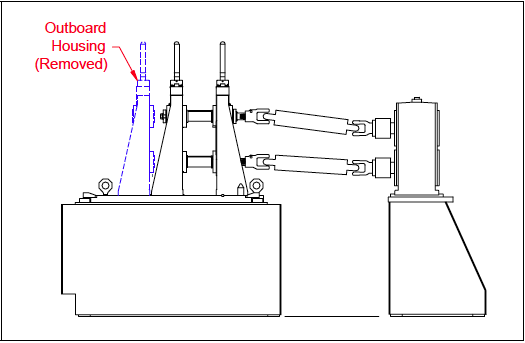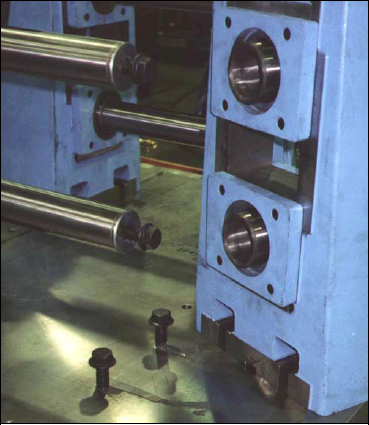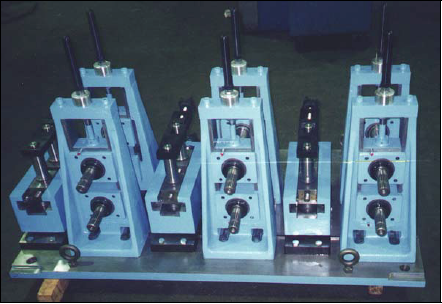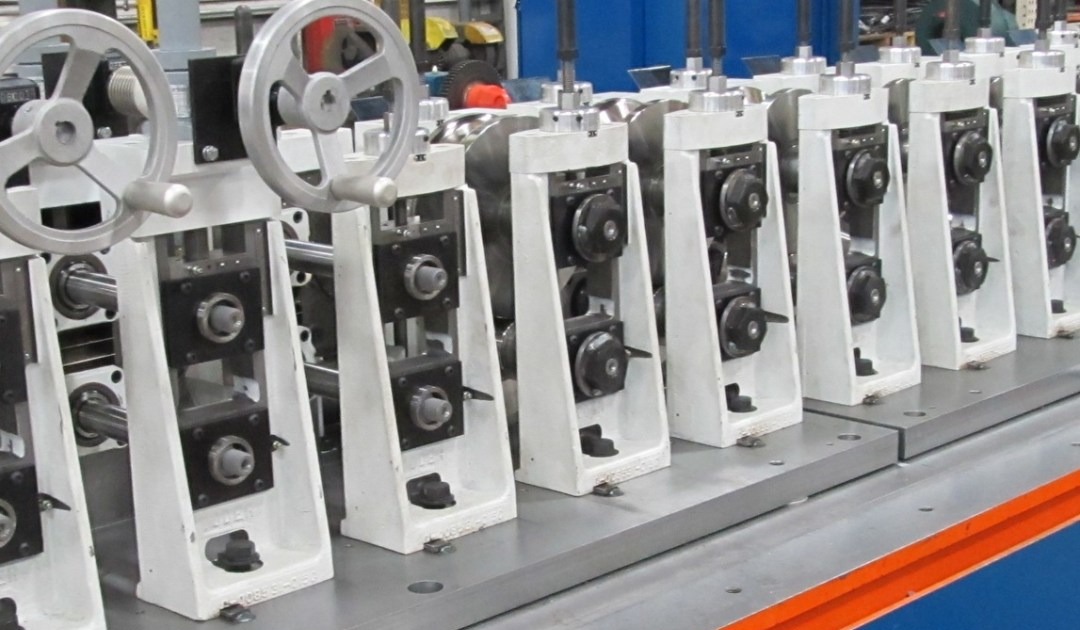In an age where just about every tube producer is being pushed to ship more tube in less time, one of the most used buzzwords in the industry is “quick-change.” For a tube mill, quick-change means adjusting or exchanging the necessary tooling (i.e., rolls) to make a new tube with a different wall thickness and/or outside diameter (OD).
To achieve quick-change, the producer must find an efficient and economic way to exchange these rolls. However, in order to discuss or achieve quick-change, we must first review the current method of changeover. In this post, we will compare conventional tooling changeover methods to the rafting method for quick-change.
Conventional Changeover
The vast majority of mills currently in production all have the same basic driven stand design shown in the image below. This design requires that the outboard housing be removed first in order to allow the roll tooling to be slid off the roll shafts. The following image shows an actual roll stand with the outboard housing removed.
This design requires that the outboard housing be removed first in order to allow the roll tooling to be slid off the roll shafts. The following image shows an actual roll stand with the outboard housing removed. Although time consuming, this procedure can be done in less than an hour using an experienced changeover crew with all the necessary facilities (e.g., tooling racks) to expedite the process. Assuming this is in a small mill (i.e., 2" (50mm) OD roll shafts or less) with roll tooling that can be handled by hand.
Although time consuming, this procedure can be done in less than an hour using an experienced changeover crew with all the necessary facilities (e.g., tooling racks) to expedite the process. Assuming this is in a small mill (i.e., 2" (50mm) OD roll shafts or less) with roll tooling that can be handled by hand.
Rafted Changeover
Many new mills built today take the conventional changeover concept to the next level by using a rafted mill design. In this design, the driven and idle roll stands are mounted on a removable subplate. This subplate assembly is referred to as a “raft.” The following image shows a typical raft that has been removed from the mill.

By having a rafted mill with a second set of rafts, the next tube to be produced can be set up offline on a second raft set in advance. Then when the current tube’s production is complete, the rafts are simply exchanged.
When using a rafted mill, there are two additional concerns that can greatly affect how much time the changeover will take. The first is how the universal drive shafts are going to be disconnected and reconnected with the exchange of each raft. The second consideration is how the rafts themselves will be loaded and unloaded. However, once those concerns are managed, rafting your mill can be an effective way of achieving quick-change.



